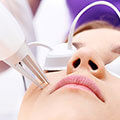- Phone: +91 9597732908
- Mon-Fri (9am - 9pm)
- varmaspinesurgeon@gmail.com
Scoliosis & Kyphosis
Scoliosis is an abnormal curvature of the spine that can occur in any age group. Scoliosis is a coronal plane (i.e. side to side) deformity occurring in children, adolescents, and adults. Symptoms vary with age of onset and severity of the curvature; cosmetic problems including sitting imbalance, breathing difficulty or delayed development is common findings in infants and young children. A rib hump, pelvic or shoulder height imbalance tend to common in the adolescent group. Intractable back pain, sciatica, leg weakness or numbness and gait difficulty are common reasons for surgical correction in adults.
Infantile Scoliosis occurs in children less than 3 years of age and is most commonly associated with other serious congenital or neurodegenerative disorders like cerebral palsy, tethered spinal cord, and myelomeningoceles, among others. Surgery is sometimes necessary, but often non-operative techniques are used to allow for spinal growth prior to a spinal fusion procedure.
Juvenile Scoliosis occurs in the 3 to 10 year age group. These deformities tend to be progressive as children grow in more than half of cases. Bracing is often used as an initial treatment until the child grows sufficiently and reaches an age and body size suitable to appropriate surgical correction. In the more severe cases, surgery is performed before adolescence.
Adolescent Idiopathic Scoliosis is the most common form of scoliosis, occurring in the 10 – 17-year-old patients. There is no identifiable cause for this disorder, and it varies greatly in it symptoms and severity. Decisions for treatment are based on the severity of the curvature, and the progression or worsening of the curvature. This condition is typically not painful, except in the most severe cases and not associated with neurologic deficits including lower extremity weakness or numbness. The majority of these conditions occur in the thoracic spine, below the neck and above the low back region. Scoliosis that was thought to be stable during adolescence and young adult life may worsen with the appearance of degenerative arthritis. This Neglected or Decompensated Scoliosis may become severely symptomatic in later adult life.
Adult Degenerative Scoliosisis an increasingly more common form of scoliosis which appears in adult life along with the onset of degenerative arthritis in the lumbar spine. These patients did not have Scoliosis as children. It worsens with age and is often associated with pain and nerve compression from spinal stenosis.
Kyphosis
Kyphosis is seen when a person’s spinal balance has moved too far forward to allow the spine to effectively carry the body weight without progressive deformity, pain or neurologic loss of function. Patients typically walk in a forward flexed posture being unable to stand up straight. This condition can also occur along with scoliosis causing Kyphoscoliosis.

 Dr. K. Kalyan Kumar Varma
Dr. K. Kalyan Kumar Varma 


